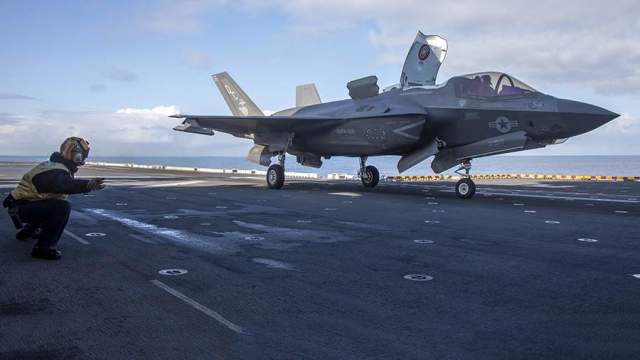The UK is seeking to promptly remove the wreckage of the Royal Air Force's F-35 Lightning fighter jet so that "the plane does not fall into the hands of a hostile state such as Russia," The Guardian quoted a representative of the country's Defense Ministry on November 17.
According to British Defense Minister Ben Wallace, the accident occurred shortly after the F-35 took off, but despite the incident, training flights involving fighter jets continue.
"The British pilot of an F-35 fighter jet from the [aircraft carrier] HMS Queen Elizabeth ejected this morning during a routine departure in the Mediterranean Sea. The pilot returned safely to the ship. The incident is being investigated, so it is inappropriate to comment on anything else yet," the British Defense Ministry said on Twitter.
An invisible plane worth 100 million pounds fell into the sea after takeoff on November 17. The plane crashed while performing a routine flight from the aircraft carrier Queen Elizabeth.
This is the first accident involving an RAF F-35B aircraft, although there have been several previous accidents involving fighter jets over the past three years. For example, in September 2018, an F-35B pilot, a US Marine, had to eject in South Carolina due to faulty fighter jet engine tubes.
On October 2, it became known that the United States will begin deploying a squadron of 27 fifth-generation F-35A fighters at Lakenheath Air Base in Britain next winter. The squadron, dubbed "Valkyrie", will be the first USAF F-35A squadron in Europe or anywhere else outside the States.
In June 2019, it became known that American F-35 fighters have a number of significant drawbacks, due to which aircraft risk not being able to cope with combat missions. We are talking about the F-35B and F-35C models designed for the Navy and Marine Corps.

